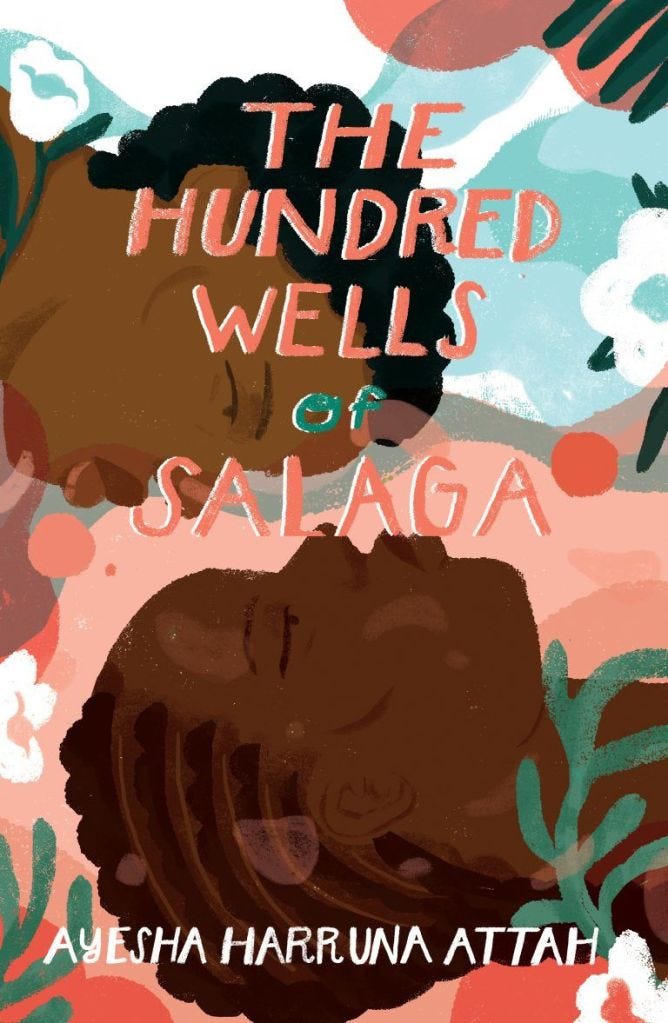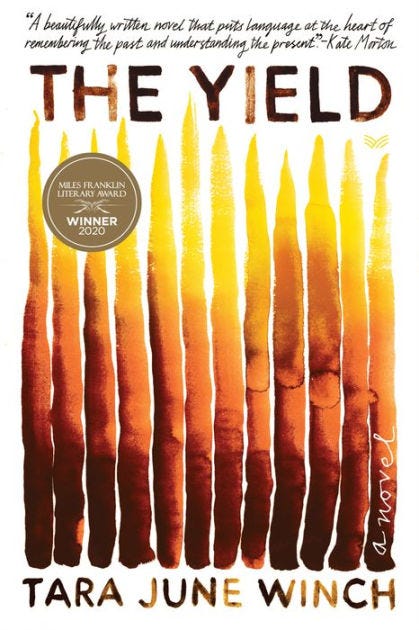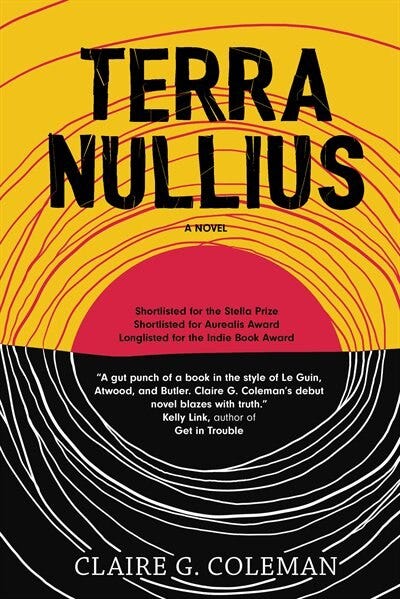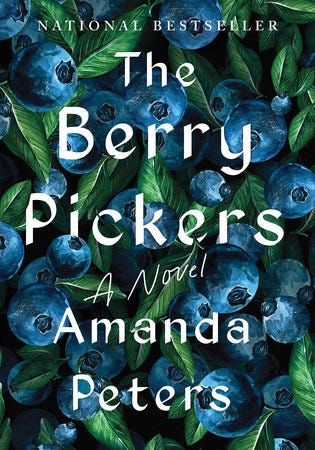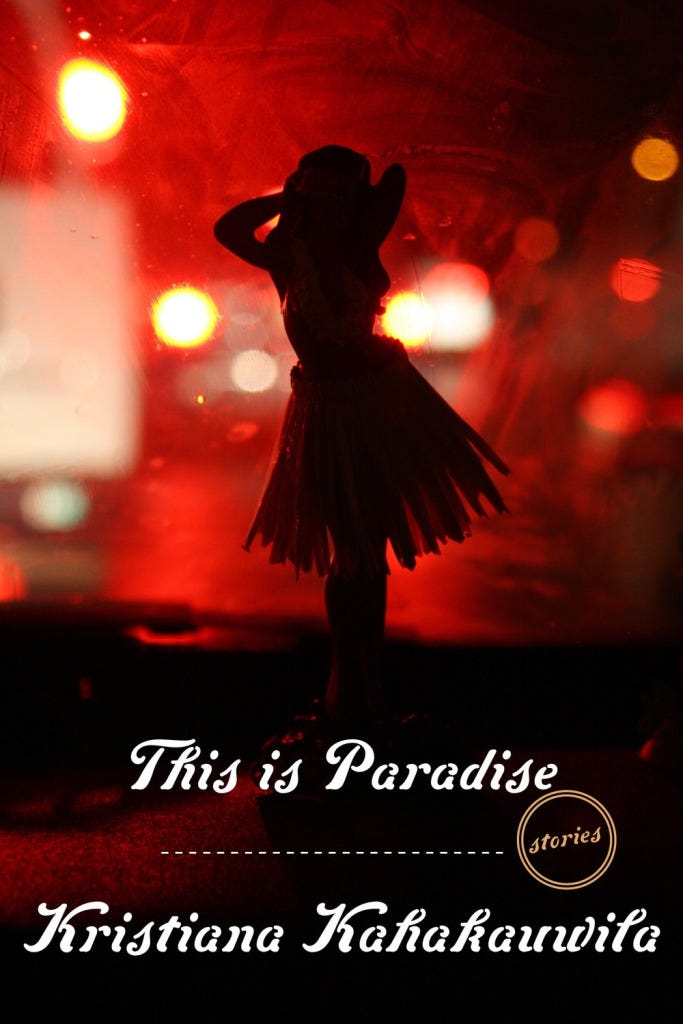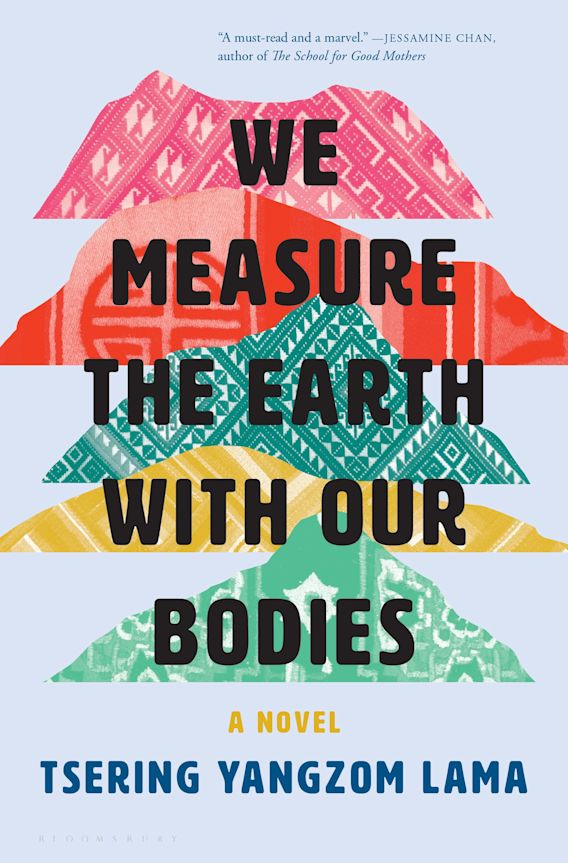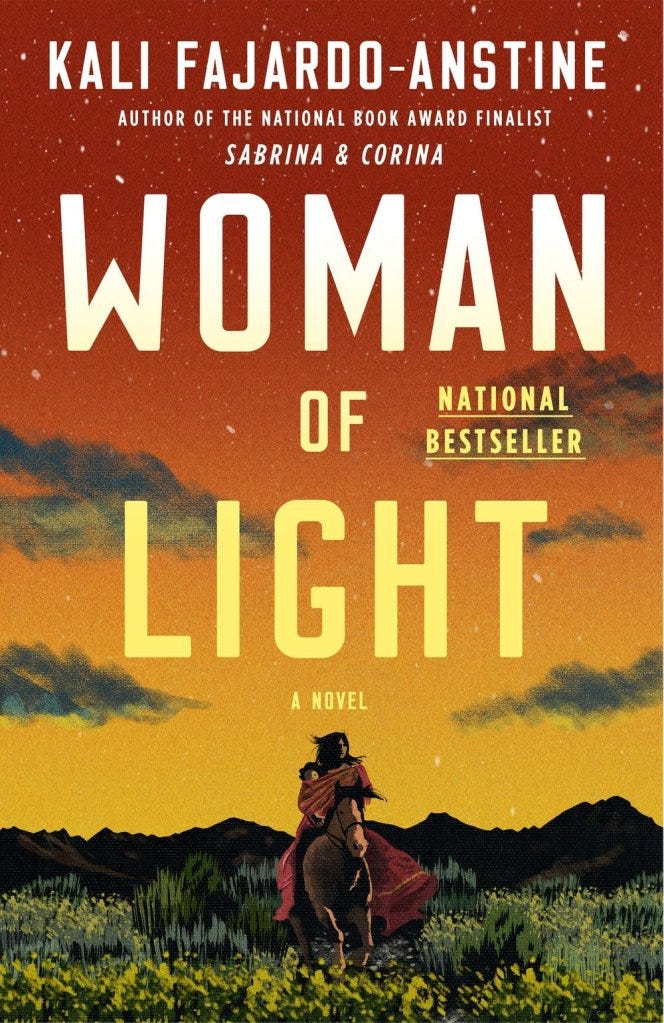Eight books about Indigenous lives and cultures to read on Indigenous Peoples’ Day and beyond
In honor of Indigenous Peoples’ Day, I thought I would share some books by and/or about Indigenous lives that are both entertaining and informative. I’ve chosen seven novels and one short story collection about the indigenous people of Ghana, Australia, Canada, Hawai’i, Tibet, the United States, and Mexico.
The Hundred Wells of Salaga by Ayesha Harruna Attah
While I have some knowledge of the slave trade, I know next to nothing about life in west Africa before the European slave trade and colonialism began. Sadly, I’m sure that’s true of 99% of Americans. The early portion of Yaa Gyasi’s 2016 novel-in-stories, Homegoing, taught me a little about life in Ghana when the slave trade began. So my interest was piqued when I came across The Hundred Wells of Salaga.
Ayesha Harruna Attah’s third novel is based on the experiences of her great-great grandmother, who was captured by African slave traders and sold at the slave market in Salaga, Ghana. Attah has reshaped that story into the narratives of two very different young women in late 19th century Africa, just as the British and Germans are making inroads for trade.
Aminah is a village girl who is captured by African slave traders and taken to Salaga, where she is sold to an abusive farmer. Wurche is the daughter of a chief and is clearly a natural leader herself. The girls’ stories are told in fast-paced alternating chapters; the plot becomes more complex and the tension increases as their paths approach and then cross.
The most notable aspect of The Hundred Wells of Salaga is the way Attah gives us both a wide-angle view of pre-colonial west African life, including tribal alliances and warfare, and a close-up look at the two girls’ very different lives to show us the range of cultures and experiences there. The result is a compelling story of a time and place we need to know more about and better understand.
The Yield by Tara June Winch
Tara June Winch belongs to the Wiradjuri people of central New South Wales. The Yield (2019) received Australia’s highest accolade, the Miles Franklin Literary Award, as well as the 2020 Voss Literary Prize, the Prime Minister’s Literary Award, Book of the Year at the NSW Premier’s Literary Awards, the Christina Stead Prize for Fiction, and the People’s Choice award.
Weaving together three narrative strands, Winch tells the heartbreaking story of the attempted genocide of Aboriginal Australians, first by British colonizers and then by Australians in the 20th century, followed by government policies and a national culture that has marginalized Indigenous people. The heart of The Yield concerns August Gondiwindi, who is living in self-imposed exile in England when she learns that her grandfather Albert, who raised her, has died. Twenty years after her sister Jedda’s disappearance when she was 10, August returns to the western New South Wales farming town of Massacre Plains for Poppy Albert’s funeral. In doing so, she is forced to confront the consequences of the racism and poverty of her childhood, complicated relationships with her extended family, and the oppressive cultural and economic limitations of rural Australia. To say it is a bittersweet homecoming is an understatement.
August soon learns that a huge mining company has purchased the land on which her family lived. The land technically belonged to the government, which had leased it out for generations to the wealthy farming family who lived up the hill from the humble Prosperous House, where Albert and Elsie Gondiwindi had raised their children and grandchildren, and which served as the clan’s home base. August was close to her grandfather, and her homecoming has reconnected her to the land. His loss and the discovery that he was working on a book — which she cannot find anywhere — inspire her to try to save Prosperous House for her grandmother and relatives. But how do you stop a huge corporation operating with the government’s support? August needs to find a way to prove that the land is significant and should be protected. That is the compelling central conflict of the contemporary plot line.
Terra Nullius by Claire G. Coleman
Claire G. Coleman, an Indigenous writer from Western Australia, burst onto the scene in 2018 with Terra Nullius, a work of speculative fiction that told an old story in a new way. Coleman’s debut examines colonization, displacement, and racism with a fresh viewpoint and energetic, muscular prose. It’s a combination of literary fiction, historical novel, and science fiction. It was shortlisted for the 2018 Stella Prize Indie Book Awards.
She returned in 2019 with The Old Lie, a futuristic tale about five seemingly unconnected characters. Like Terra Nullius, it’s a sci-fi thriller based on Australian history. She next turned to nonfiction in Lies, Damned Lies: A Personal Exploration of the Impact of Colonisation. “This is a difficult piece to write,” she says. “It cuts closer to the bone than most of what I have written; closer to my bones, through my blood and flesh to the bones of truth and country; there is truth here, not disguised but in the open and that truth hurts.
The Berry Pickers by Amanda Peters
The Berry Pickers examines the lengths people will go to for family – to have one, to hold one together, or to rebuild one – and the lies we’ll tell ourselves and others in the process.
The berry pickers of the title are a crew of Mi’kmaw workers from Nova Scotia who travel to Maine in the summer to pick blueberries. One day, a family’s youngest child, four-year-old Ruthie, disappears. The search is unsuccessful, in part because the police are not interested in helping these migrant workers. Eventually, the family reluctantly returns to Nova Scotia and attempts to go on without their daughter and sibling. Ruthie’s six-year-old brother Joe is so haunted by the loss that his life is completely upended. He is one of the novel’s two narrators, a 56-year-old looking back at the difficult, broken lives of the various family members as he battles cancer.
The other narrator is Norma, the only child of an older couple from rural Maine. We learn early on what happened to Ruthie. The mystery that The Berry Pickers probes is why and how. What would compel a woman to kidnap a child? How would she and her husband, a local judge, explain the presence of their new four-year-old daughter who looks nothing like them? How would they keep their secret? Who else was complicit and why?
The structure and plotting allow Amanda Peters to explore the impact of Ruthie’s loss on the various relationships within her birth family, as well as the tensions within her “adoptive” family. As you would expect, no one escapes unscathed from the criminal and immoral act at the heart of the novel. And this is just one story among the tens of thousands of Native American/Indigenous lives that were destroyed by American and Canadian government policies intended to erase them through the removal of children from their families and forced assimilation at “Indian schools.”
This is Paradise by Kristiana Kahakauwila
The stories in Kristiana Kahakauwila’s debut collection, This is Paradise, depict the real Hawai’i. Beyond the tourist images and fantasies of Hawai’i lies a real place, where island residents live and love, dream and die, and struggle desperately against economic, cultural, and ethnic forces beyond their control.
These six stories are suffused with a bittersweet sadness for what could have — or should have — been, for words unsaid, emotions unexpressed, and customs misunderstood. Kahakauwila is the daughter of a Hawaiian father and German-Norwegian (American) mother and grew up in Long Beach, California. She made frequent trips to Hawaii (mostly to Maui) to visit family and was thus occasionally immersed in the local culture, but she was essentially a Southern California girl. Her ethnic and cultural heritage positions her ideally to write about the two Hawai’is, the tourist version and the locals’ version, with both objectivity and sensitivity, as well as insight and compassion.
The collection opens with the title story, which may well be the best summation of how Hawai’i is experienced differently by tourists and residents. Three groups of narrators — surfer girls, hotel housekeeping employees, upwardly mobile professional young women — tell the story in the first-person plural “we.” Kahakauwila follows it with what might be the best story in This is Paradise. “Wanle” puts us inside the life of a young woman who is following in her deceased father’s footsteps as a legendary cockfighter. As with the tourist girl in the title story, Wanle bears the burden of her illusions. “The Road to Hana” finds a young couple driving the notoriously long, narrow road on Maui, giving them plenty of time to talk. “Portrait of a Good Father” and “The Old Paniolo Way” are the richest and most complex stories in the book. In 43 and 66 pages, respectively, Kahakauwila unfolds an entire world that could easily have been developed into a novel and yet seems complete as a long story.
We Measure the Earth with Our Bodies by Tsering Yangzom Lama
We Measure the Earth with Our Bodies is a capacious novel that sweeps over continents, decades, and generations to depict one family’s escape from Tibet after China’s invasion in the 1950s to a refugee camp in Nepal, then eventually to Canada. The various sections are told from the perspectives of Lhamo, who was a child when she fled across the Himalayas; her younger sister, Tenkyi, the smart, promising one; her daughter, Dolma, a Tibetan Studies scholar in Toronto; and her heart’s love, Samphel, who disappears and reappears in her life like a passing breeze.
For readers who appreciate character-driven fiction, this is an incredibly powerful book that evokes a tactile sense of place. Lama’s prose is muscular and piercing, her observations of the realities of exile unflinching, her characters textured and compelling. While the pacing is on the slower side, I reveled in the immersive experience, fully captivated by this family’s struggle to survive and make meaning of their existence.
If you’ve never read anything by an author of Tibetan descent, please read this! It’s essential, devastating, intimate, and impassioned. Ultimately, the question Lama asks through this novel is what will the world do about this injustice, about the plight of displaced Tibetans? What will the reader do?
Five Little Indians by Michelle Good
The horrifying abuses committed at Indian Residential Schools in Canada have been in the news the last few years. The government and Catholic Church joined forces to take Native children from their families to be raised and educated at schools that were more like prisons. (Similar schools and policies existed in the U.S. until the 1970s.) Good’s powerful and heartbreaking novel follows five students after their release (and in one case, escape) from a “school” in rural British Columbia, starting in the late 1960s and continuing for several decades. Each character copes with their traumatic experiences in different ways, some more successfully than others. Required reading.
Woman of Light by Kali Fajardo-Anstine
Kali Fajardo-Anstine’s debut collection, Sabrina & Corina, which explored the lives of Latinas of Indigenous ancestry in New Mexico and Colorado, was a National Book Award finalist. Woman of Light, her first novel, follows Luz “Little Light” Lopez, a tea leaf reader, as she struggles to make it on her own in 1930s Denver. She begins to have visions of her Indigenous ancestors, which allows Fajardo-Anstine to explore their history in the Lost Territory of the Southwest. Woman of Light folds a necessary history lesson into a story of oppression, resistance, and adaptation. It seems destined to become a movie or series.



